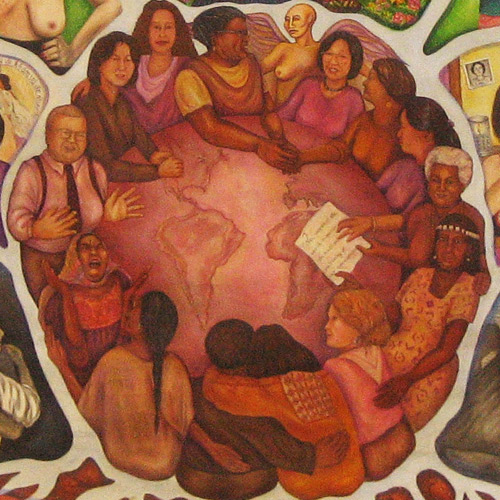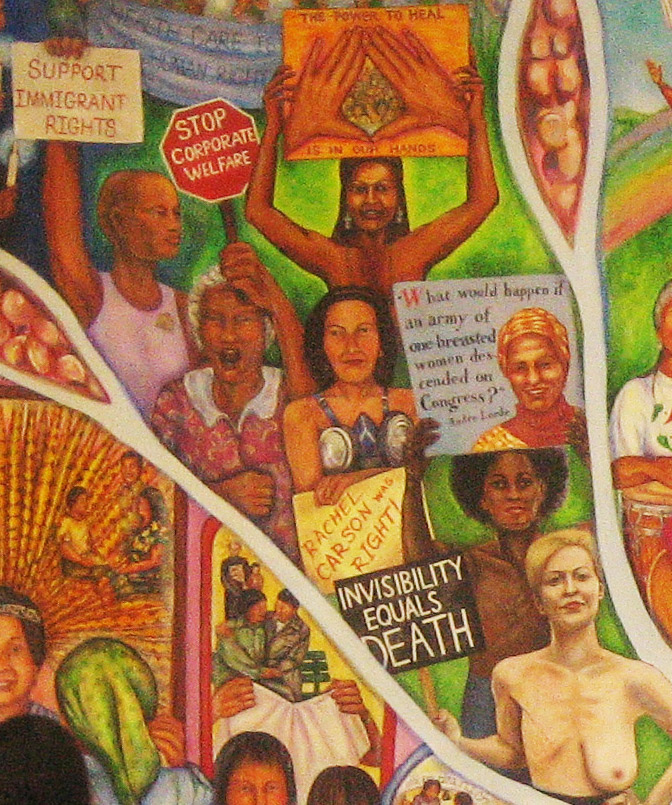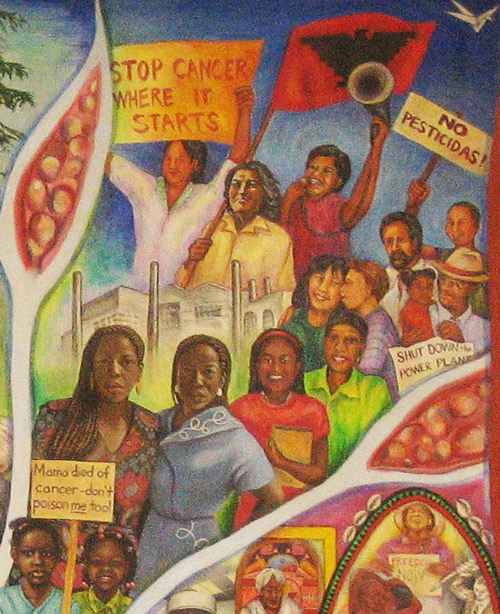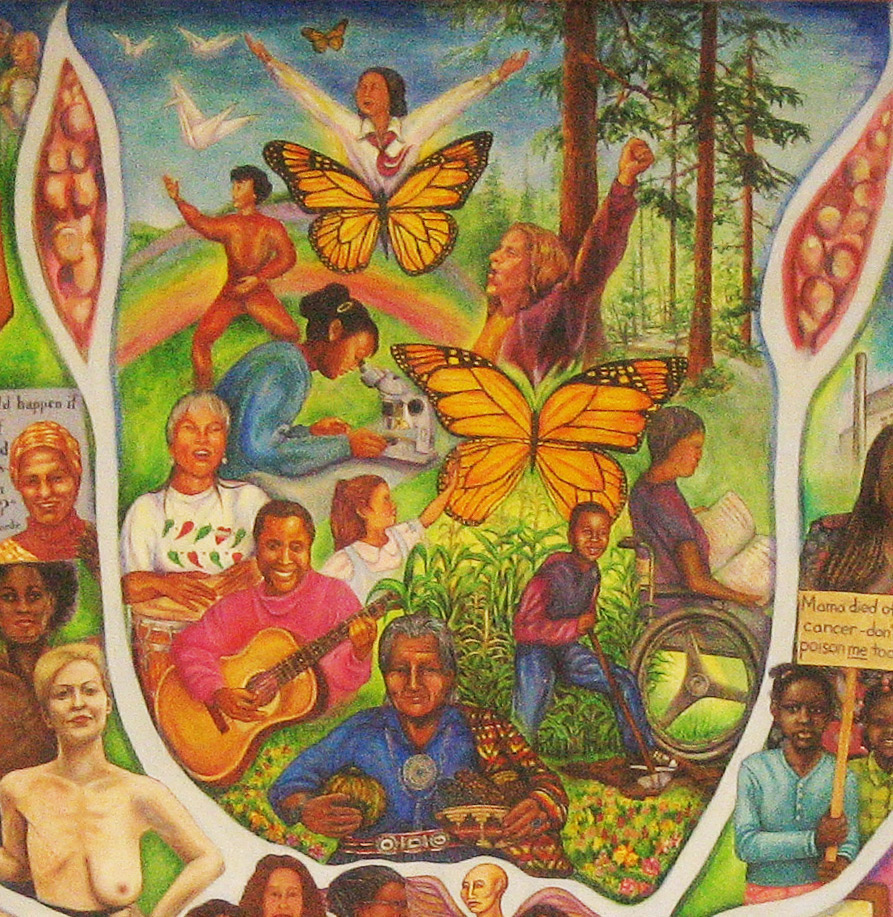Picturing Breast Cancer
Traveling Mural Highlights Environmental Links
A woman dying of cancer is wrapped in another woman's arms. Behind them, incinerators belch out dark clouds of smoke. Nearby, a one-breasted woman carries a placard reading: "The power to heal is in our hands!" In a corner, a dewy-eyed girl holds another with a simple plea: "Mamma died of cancer -- don't poison me too!"
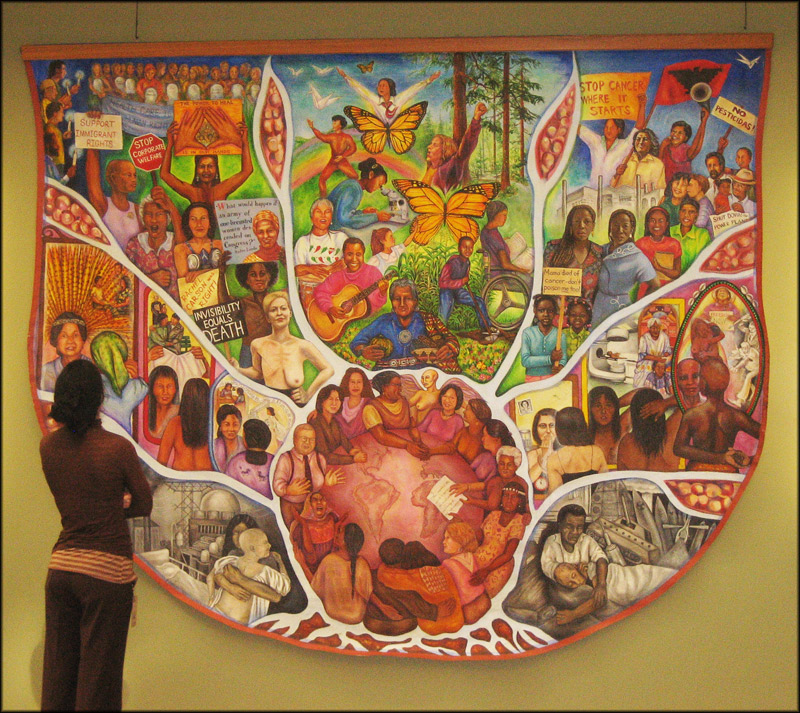
Sauerhaft founded The Breast Cancer Oral History Action Project (BCOHAP) based in the San Francisco Bay Area to gather stories about women's experiences with breast cancer. The multilingual stories were then illustrated by muralist Miranda Bergman: "I took the ideas and images they wanted and came up with the design of a single breast to hold all of them together."
Who is Getting Breast Cancer?
In the United States, low-income women have a significantly higher mortality rate from breast cancer. These women are also most likely to be living in areas where they're exposed to higher levels of environmental toxins linked to breast cancer.
They are disproportionately women of color, and often non-native English speakers with limited literacy. U.S. government statistics cite African American women as having the highest breast cancer mortality rate of any racial or ethnic group in the United States. Breast cancer is also the leading cause of cancer death among Latinas. The only exceptions seem to be among Native American women, although the American Cancer Society points out it is likely that many cases of breast cancer among them go unreported.
Beth Sauerhaft explains that without adequate services, outreach and access to healthcare, many women with language barriers feel uncomfortable and misunderstood by doctors. As a result, marginalized populations of women are less likely to undergo screenings, less likely to be diagnosed, less likely to be treated and therefore, more likely to die from breast cancer. These factors motivated Sauerhaft to create the BCOHAP.
Gathering Women's Stories
"In the mid-nineties," Sauerhaft explains, "there were little to no resources available to women of color about breast cancer." So she enlisted the help of a group of low-income women as "action researchers" to interview other low-income women and women of color about their experiences with breast cancer.
The "action researchers" gathered accounts from participants in their native languages of Spanish, Mandarin, Cantonese and English. Sauerhaft explains, "The idea around participatory action research is that everyday people are experts on conditions affecting their own lives."
Many of the women depicted in the mural are, in fact, real participants from the BCOHAP, the action researchers, breast cancer survivors, as well as the health educators and activists who inspired the project. Sauerhaft describes the resulting mural as "a counter narrative to the Western medical system that treats bodies as machines that need fixing and treats the medical establishment as experts."
Facing the Mirror
For over a decade, Who Holds the Mirror? has traveled the United States, stopping at universities, conferences, health and cultural organizations and NGOs, in an effort to generate dialogue about women's health, environmental justice and the power of collective action.
It has inspired participants and audiences on a personal and political level. "When I see the mural, I feel proud of what we've done," says Maria Nakata, one of BCOHAP's action researchers. "It is very powerful for me to see all of the women in the mural, because they were willing to share their painful experiences with us. They helped me to open my eyes to the dangers of the chemicals we are exposed to in our environment."
Andres Muro is Director of Adult Literacy Center in El Paso, Texas: "The mural helped many here in El Paso working on the border with farm workers and others to want to get more involved in health and environmental justice issues and to teach about these issues in our program."
Environmental Links
In 2008, one in eight American women will be diagnosed with breast cancer in her lifetime and 60 percent diagnosed will have none of the "known" personal risk factors. Little research, however, has focused on environmental links to the disease. Specifically, while U.S. federal funds for breast cancer research have increased in the last decade, less than three percent of them have gone into investigating the environmental links to the disease.
With breast cancer rates on the rise, the mural is still an important tool in communicating the inextricable links between breast cancer and exposure to environmental toxins. Who Holds the Mirror?makes central the wisdom of women who are too often excluded from the conversation.
The traveling mural, Who Holds the Mirror? Breast Cancer, Women's Lives and the Environment is available for booking outside of the United States. For more information and to learn how to bring the mural to your community, visit whoholdsthemirror.com.


